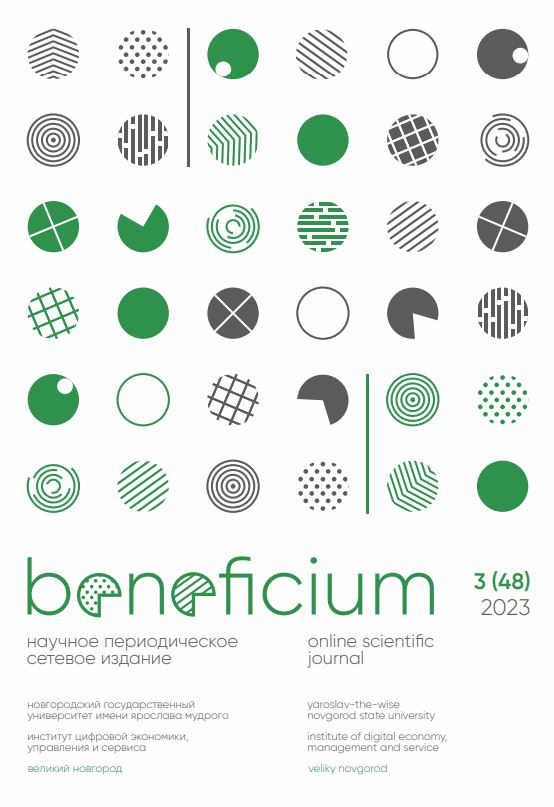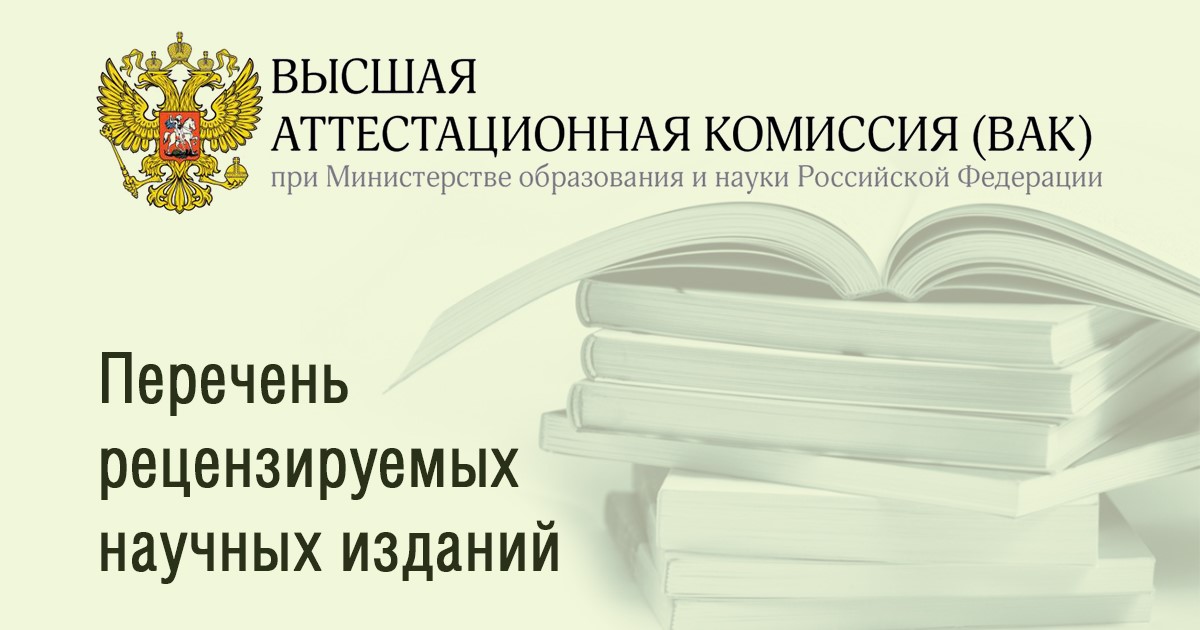IMPACT OF THE INNOVATIVE ENVIRONMENT OF THE INTERUNIVERSITY CAMPUS ON THE DEVELOPMENT OF THE REGION AND THE CITY
Abstract
In the conditions of formation of innovative economy and its reorientation from raw materials to diversified production, it is necessary to solve the issues related to the definition of factors affecting the innovation process. The innovation environment can be formed in the sub-objects in which the sub-processes of birth, development and implementation of innovations take place. In the interuniversity campus these processes are united, i.e. the innovation environment is formed. In this connection it is relevant to study its influence on the development of the region and the city. Research objectives: to formulate the definition of the concept of "innovation environment", to identify the factors that shape it, to compare them with the indicators of achieving the goals of sustainable development of regions and cities. Such research methods as analysis and comparison of the regulatory framework, scientific sources, synthesis, classification and typification are applied in this work. The paper systematically considers the concept of "innovation environment", presents the types of objects of campus innovation environment, the relationship between the factors of campus innovation environment and subjects of innovation infrastructure. The study reveals the relationship between the environmental component of sustainable development and the factors of innovation environment, such as production, innovation infrastructure, information and political and between the quality of urban environment and social, information factors. The economic component is influenced by environmental factors related to the production and commercialization of innovations. In the future, the built theoretical model can be empirically substantiated on the example of individual regions, which, among other things, will make it possible to identify factors and conditions that reduce or enhance the impact of the campus innovation environment on the external environment.
Keywords: innovation institutions, innovation environment, innovation cycle, urban environment quality, interuniversity campus, spatial economy, university, sustainable development, environmental factors
References
Federal Law of August 23 1996 No. 127-FL “O nauke i gosudarstvennoj nauchno-tekhnicheskoj politike” [“On science and state science and technology policy”] (2023). ConsultantPlus. (In Russ.). URL: https://www.consultant.ru/document/cons_doc_LAW_11507/c0a49fc869aeeb5b28ca88d3d37b7 d8f7474375f/ (accessed on: 18.06.2023).
Castells M. Information Age: Economy, Society and Culture. M.: NRU HSE, 2000. 365 p. (In Russ.).
Vesnina O. O. Innovative environment: approaches to definition, essence and structure // Bulletin of Chelyabinsk State University. 2017. Vol. 2(398). Pp. 19-24. (In Russ.).
Sotnikova C.I. Where we can seek the foundation of innovations: the interconnect between the innovation area and sistem of management // Business in Law. 2013. Vol. 4. Pp. 162-167. (In Russ.).
Karpova Yu.A. Innovacionnaya sreda kak ob"ekt sociologicheskoj innovatiki: problema upravleniya [Innovative environment as an object of sociological innovativeness: the problem of management] // Innovations. 2008. Vol. 10(120). Pp. 45-48. (In Russ.).
Asheim B.T., Isaksen A. Regional Innovation Systems: the Integration of local ‘Sticky’ and global ‘Ubiquitous’ Knowledge // Journal of Technology Transfer. Vol. 27(1). 2002. P. 77–86. DOI: 10.1023/A:1013100704794
Cooke P. Regional Innovation Systems: Competitive Regulations in the New Europe // Geoforum. Vol. 23(3). 1992. P. 365–382. DOI: 1016/0016-7185(92)90048-9
Doloreux D., Porto Gomez I. A review of (almost) 20 years of regional innovation systems research. European Planning Studies. 2017. V 25(3). Pp. 371–387. DOI: 10.1080/09654313.2016.1244516
Atoyan V.R., Kazakova N.V. O nekotoryh podhodah k analizu razvitiya innovacionnyh sistem v globaliziruyushchemsya mire [On some approaches to analyzing the development of innovation systems in a globalizing world] // Innovations. 2007. Vol. 3(101). Pp. 27-34. (In Russ.).
Frolova N.V., Selyaninov A.V. Agent-orientirovannaya model' innovacionnogo processa poyavleniya, otbora i realizacii innovacionnyh idej [Agent-based model of the innovation process of emergence, selection and implementation of innovative ideas] // Perm University Herald. Economy. 2012. 69-76. (In Russ.).
Managing National Innovation Systems. Paris: OECD, 1999. 112 p. DOI: 10.1787/9789264189416-en
Cooke P, Morgan K. The Associational Economy. Firms, Regions and Innovation. Oxford: Oxford University Press, 1998. 207 p.
Longi H., Niemelä S. Drivers of the innovation system and role of knowledge application in regional innovation system - case Oulu region, Finland // Arctic and North. 2021. Vol. 42. Pp. 103-121. (In Russ.). DOI: 10.37482/issn2221-2698.2021.42.103
Nashe obshchee budushchee. Doklad Mezhdunarodnoj komissii po okruzhayushchej srede i razvitiyu [Our Common Future. Report of the International Commission on Environment and Development]. M.: Progress, 1989. 50 p. (In Russ.).
Polyanskaya N.M., Kolesnyak A.A., Kovalenko E.I. Scientific potential as a factor of regional innovative socio-economic development // Russian Journal of innovative economics. 2022. Vol. 12(1). Pp. 519-534. (In Russ.). DOI: 10.18334/vinec.12.1.114260
Zamyatina M.F., Tishkov S.V. ESG factors in Russian business and regional strategies and their role in regional innovative development // Russian Journal of innovative economics. 2022. Vol. 12(1). Pp. 501-518. (In Russ.). DOI: 10.18334/vinec.12.1.114369
Aiwu Z., Jingyi W., Zhenzhen S., Hongjun G. Environmental taxes, technology innovation quality and firm performance in China — A test of effects based on the Porter hypothesis // Economic Analysis and Policy. 2022. Vol. 74. Pp. 309-325. DOI: 10.1016/j.eap.2022.02.009
Rongxin Wu, Boqiang Lin. Environmental regulation and its influence on energy-environmental performance: Evidence on the Porter Hypothesis from China's iron and steel industry // Resources Conservation and Recycling. 2022. Vol. 176. Pp. 105954. DOI: 10.1016/j.resconrec.2021.105954
Ramanathan R., He Q., Black A., Ghobadian A., Gallear D. Environmental regulations, innovation and firm performance: A revisit of the Porter hypothesis // Journal of Cleaner Production. 2017. Vol. 2(155). Pp. 79-92. DOI: 10.1016/j.jclepro.2016.08.116
UI Green Metrics (2023). URL: https://greenmetric.ui.ac.id (accessed on: 03.07.2023).
TSD A., ESP. C., Ratnasekera. D., Hasini K.K.L Journal of Sustainability Perspectives Innovative strategic planning for a sustainable green university: University of Ruhuna, Sri Lanka // Journal of Sustainability Perspectives. 2022. Vol. 2(1). Pp. 32-38. DOI: 10.14710/jsp.2022.154633
About the Author
Liudmila A. Romanova – Cand. Sci. (Economics); Associate Professor, Pacific National University, Khabarovsk, Russia. E-mail: 007634@pnu.edu.ru. SPINРИНЦ 3972-6765. ORCID 0000-0002-7659-105X. Scopus Author ID 57485322700
For citation: Romanova L.A. Impact of the Innovative Environment of the Interuniversity Campus on the Development of the Region and the City // Beneficium. 2023. Vol.3(48). Pp. 62-68. (In Russ.). DOI: 10.34680/BENEFICIUM.2023.3(48).62-68









